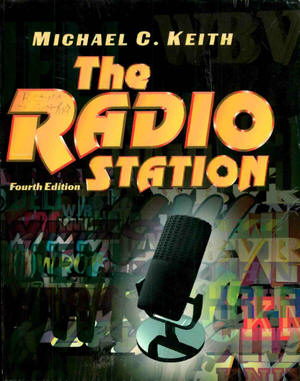|
The Radio Station |
|
First published
in 1986, Michael Keith's "The Radio Station"
is considered the best as well as the most
widely used text on radio broadcasting.
|
| Michael Keith
|
| Michael Keith is
an American media historian. He has served
as a faculty member of the Boston
College Communication Department and is the
author of some two dozen books on media. He
is one of the country's foremost authorities
on the social impact and role of radio in
American culture. It is with Mr. Keith's
consent that we present the first editions
of this important text. |
| Latest
Edition from Amazon |
 |
|
A great gift for anyone interested in
learning more about radio. |
|
The Radio Station offers a concise and
insightful guide to all aspects of radio
broadcasting, streaming, and podcasting.
This book’s tenth edition continues its long
tradition of guiding readers to a solid
understanding of who does what, when, and
why in a professionally managed station.
This new edition explains what "radio" in
America has been, where it is today, and
where it is going, covering the basics of
how programming is produced, financed,
delivered and promoted via terrestrial and
satellite broadcasting, streaming and
podcasting, John Allen Hendricks and Bruce
Mims examine radio and its future within a
framework of existing and emerging
technologies. The companion website is new
revised with content for instructors,
including an instructors’ manual, lecture
slides, and test questions. . |
|
Description of 10th Edition |
|
|
First Edition 1986 |
Second Edition 1989 |
 |
 |
|
Third Edition 1993 |
Fourth Edition 1997 |
 |
 |
|
Michael Keith speaks of his
inspiration for this series: |
|
When I began fulltime college
teaching in 1978,I discovered that
no text existed that adequately
conveyed the reality of the radio
industry at least from my
perspective. I'd Just spent a dozen
years in the trenches of commercial
radio, and the most prominent text
at the time read like a 1950s
government instruction manual. It
devoted whole chapters to subjects
that had no real relevance to the
contemporary audio medium.
Furthermore, it was virtually devoid
of visuals. To me that seemed a huge
deficiency because so much about
radio is visual. On top of that, I
was teaching a generation that was
completely screen (picture)
oriented. Therefore, a text
consisting primarily of type and
white space Just didn't cut it, as
far as I was concerned. |
Therefore, a text consisting
primarily of type and white space
Just didn't cut it, as far as I was
concerned. Perhaps the thing that
struck me as most lacking in the
dominant radio text of the period
was its nearly complete lack of
industry input, which I felt was
absolutely essential in any
publication purporting to
comprehensively cover a subject. So
with the preceding in mind, I set
out to rectify those (and other)
short falls. Based on what I've
heard from users over the many
years. I managed to do this. Every
so often, if you're lucky, you hit
the target. (In the interest of
retaining a dear friendship and
prolific collaboration. I'll not
reveal the author's name of the
dated text referenced above.) |
|
|